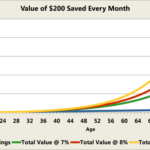Real estate
The cycle in real estate has a lot in common with other cycles, such as the one that controls the provision of capital or credit.

- Positive events and increased profitability lead to greater enthusiasm and optimism.
- Improved psychology encourages increased activity. That includes doing more of something; doing it on the basis of rosier assumptions; paying higher prices to do it; and/or lowering the standards that have to be met if one is to do it. All of these things tend to entail the assumption of greater risk.
- The combination of positive psychology and the increase in activity causes asset prices to rise, which encourages still more activity, further price increases, and greater risk-bearing.
- Inevitably this virtuous circle takes on the appearance of being unstoppable, and this appearance causes asset prices and the level of activity to go too far to be sustained.
But when the news eventually turns less positive and the environment becomes less hospitable, the levels of psychology, activity and risk-bearing prove to have been excessive, and the same goes for asset prices. The resulting price correction causes psychology to become less positive, which causes disinvestment, which puts further downward pressure on prices, and so forth.
These are all elements that most financial cycles have in common, and that includes the cycle in real estate. But the real estate cycle incorporates another ingredient that the others generally don’t share: the long lead times required for real estate development to take place.
Source: Chapter 9 – Real estate/Mastering the Market Cycle – Howark Marks
Các bình luận
Chuyên mục: English News









Mạng xã hội